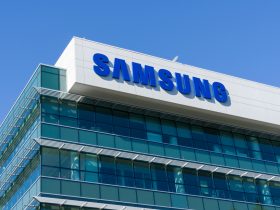Silicon Valley start-up Mojo Vision is developing contact lenses that allow their wearer to see the world with an augment reality overlay. When the latest technology in the world was presented earlier this month at the Las Vegas-hosted Consumer Electronics Show (CES), Mojo chose the moment to showcase its prototype lenses. The latest new wearables tech to offer insight into how man and machine can be expected to become increasingly integrated in future years, attracted attention.
Mojo Vision was founded less than half a decade ago in 2015 and has since managed to attract over $100 million in investment. That funding has allowed the start-up to reach the prototype stage of its augmented reality tech on show earlier this month. Visitors to the CES were able to test the experience of looking through contact lenses that incorporate augmented reality functionality as well as how the user interface.
At first glance, Mojo Vision’s lenses don’t look particularly different to standard prescription or aesthetic contact lenses. But that appearance is deceptive, with a raft of technology somehow incorporated into them. The nanotech that the lenses are brimming with include a micro-LED screen, microprocessor, miniaturised wireless communication tech and several tiny sensors.
The lenses are controlled by the wearer’s eye movements. For example, a glance at the options on the ‘home screen’, displayed by the micro-LED screen facing the retinas, allows the wearer to select from the functionality options. The functionalities included in the prototype lenses are limited at this stage and included being able to bring up weather conditions and travel information. But Mojo’s future plans include a huge range of apps and functionalities.
Examples envisioned include real time translation of foreign languages through subtitles brought up in front of the eyes and the kind of health and fitness stats that can today be found on smartphone apps and health tracker wearables. Another obvious use case would be the transcript of a speech rolling in front of the eyes of the person delivering it.
Steve Sinclair, Mojo’s head of product and marketing, comments:
“It makes you smarter in the moment. It augments your memory. Or let’s say you have to give a speech: the transcript is right in front of you. Being connected to the internet means having access to any kind of service, [including] connecting to Alexa to give voice commands.”
Mojo Vision hopes that incorporating augmented reality into contact lenses will be more successful than previous attempts to offer similar kinds of functionality through spectacles. Google’s Glass smart spectacles were launched in a blaze of publicity and interest back in 2012 but failed to gain any real traction. The technology was dogged by privacy concerns and was relatively expensive, both to produce and buy, compared to the real utility they were able to offer wearers at that stage.
Mojo’s chief executive Drew Perkins believes that the contact lenses format has advantages over spectacles, which gives him confidence his company’s future is brighter than that of previous attempts at ‘smart glasses’.
“Glasses are going to have a lot of limitations and the technology is exceptionally difficult — frankly there is still not a clear path to getting [smart] glasses.”
There is a debate as to whether the lenses are technically ‘augmented reality’ technology as they use a digital display rather than an interactive digital world overlayed on the real one. But such technicalities aside, the technology seems to work well, especially for a prototype product. The home screen is activated by a sideways glance and options smoothly selected by the wearer training their gaze on them for a few milliseconds – the equivalent of a double-click. Another glance to the side and whatever data is being displayed is deactivated, replaced a normal world view again.
Privacy concerns have been addressed by the fact the lenses have no camera and cannot record anything. They do, however, contain an outward-facing image sensor. Mojo says that future development of the tech could allow that sensor to recognise objects or faces, pulling up information on them.
The computing power required for useful functionalities would still be impossible to include within the lenses themselves. That issue is resolved by the lenses coming with a proprietary short-distance communication technology connection, which sends data from and to the lenses, with the computing power outsourced to an external device. As explained by Mr Sinclair:
“Everything is about reducing the amount of power and compute required on the eyes, so we can power the device all day long. The goal is you put the lens on in the morning and you wear it all day. It’s off most of the day — but when you need it, it’s on to give you the information you need.”
Jeffrey Sonsino, a former chairman of the American Optometric Association’s contact lens and cornea section gave his seal of approval to the technology:
“Mojo has made significant efforts making it safe for the eye, working with optometrists to make a viable product.”
He also referred to the tech as “mind altering” and a “leap forward” in an area of tech where incremental developments have become the norm.










Leave a Reply